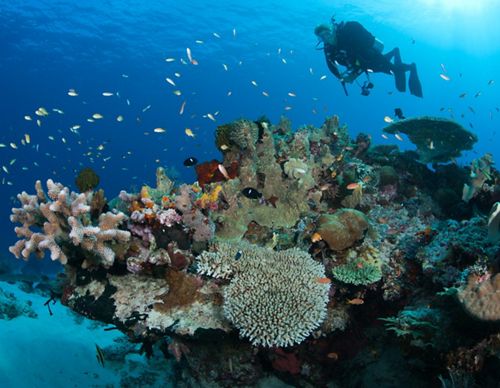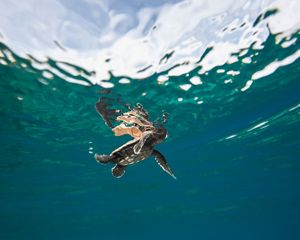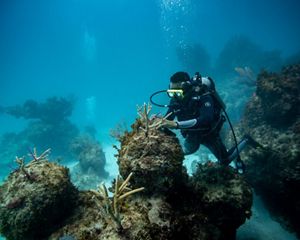Teaming Up with Disney and Avatar
Working Together to Keep Our Oceans Amazing
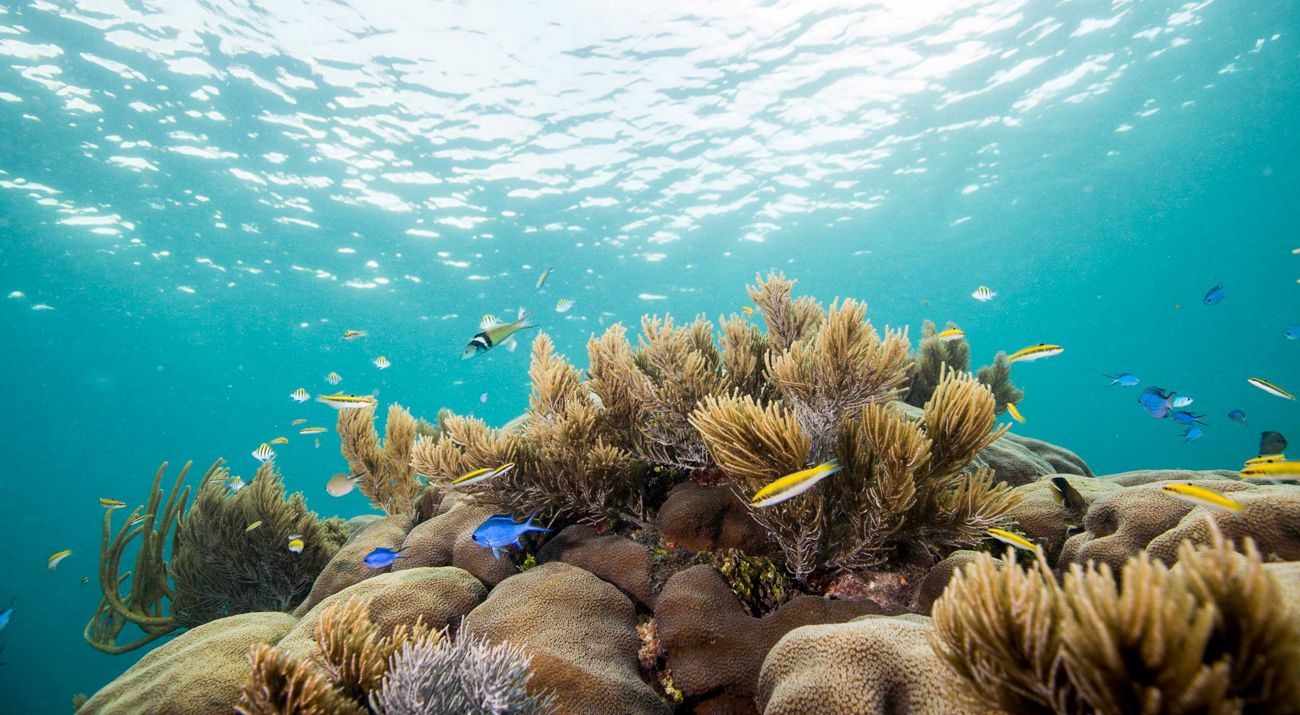
On the surface, the ocean appears as a flat expanse of blue. Yet just beneath, lies an incredible kaleidoscope of color and life. Oceans matter for all of us, no matter where we live. We depend on the ocean for food, livelihood, cultural connection, cherished memories, and even the air we breathe.
A Deep History of Collaboration
TNC and Disney have a long history of collaboration, working together on global initiatives to make a positive impact for the planet. Our collective efforts are built upon a commitment to a world where all life can thrive.
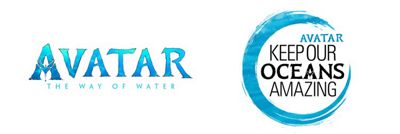
Avatar Keep Our Oceans Amazing
Protecting Ocean Species and Their Habitats
In its most recent collaboration and to celebrate Avatar: The Way of Water (released in Dec. 2022), The Nature Conservancy (TNC) teamed up with Disney and Avatar to protect 10 of our ocean’s amazing animals and their habitats, connected to the beauty of Pandora. The campaign helped keep our oceans amazing and supported TNC's goal of protecting 10% of the ocean by 2030.
Keep Our Oceans Amazing
Visitors who created their very own Avatar-inspired ocean creature in the Virtual Pandoran Ocean helped Disney support TNC to "Keep Our Oceans Amazing." Creatures added to the Virtual Pandoran Ocean after July 31, 2023, will not unlock a contribution.
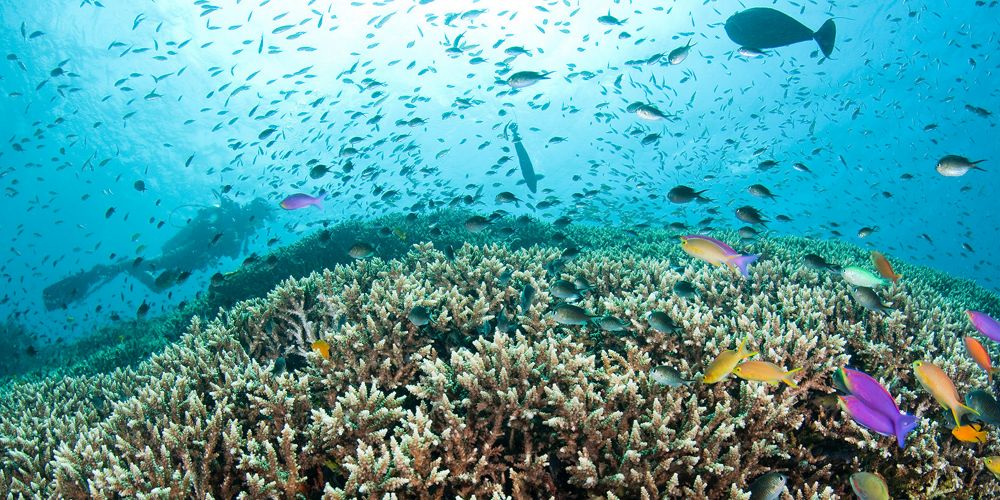

Underwater Art Celebrating Avatar and Our Oceans
In celebration of Avatar: The Way of Water and the “Keep Our Oceans Amazing” campaign, James Cameron and Disney commissioned underwater photographer Christy Lee Rogers to make art for our oceans. 100% of net proceeds from sales of the art—which features the film’s stars Zoe Saldaña, Sigourney Weaver and Kate Winslet—will go to TNC to help protect 10 of our ocean’s amazing animals and their habitats.
Learn About 10 of Our Oceans' Amazing Species
Disney and Avatar are supporting TNC to protect our oceans, including 10 amazing animals and their habitats that reflect the range and beauty of our oceans that—like Pandora’s waters—bring us together.
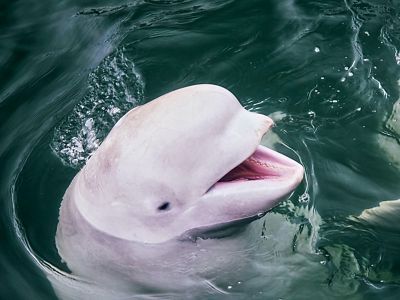
Beluga
Also called white whales, their unusual color makes the beluga one of the most distinguishable of all whales. Belugas are highly social and live in small groups called pods. These vocal communicators are often found in coastal waters of the Arctic.
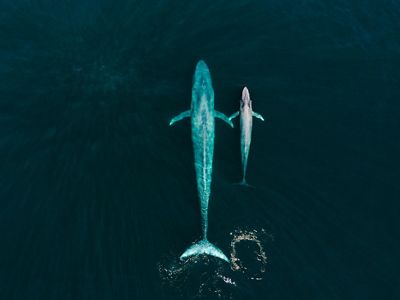
Blue Whale
The largest animal known to have ever existed, the blue whale weighs around 200 tons. Adults eat up to four tons of tiny krill each day and live up to 90 years. These iconic giants are important to ocean health, distributing nutrients as they feed.
How You Can Help the Beluga and the Blue Whale:
- Buy Local. Ship strikes are a major cause of whale fatalities. Learning where products come from and choosing locally made products can help avoid excess shipping.
- Follow NOAA's Marine Wildlife Viewing Guidelines to protect whales and other marine animals. The guidelines instruct whale watchers to keep their distance. Chasing or harassing animals, impeding their right of way, touching and feeding animals are not allowed.
- Properly dispose of used fishing line at a designated recycling bin or trash can. Your local marina, fishing access point or fishing supply store may have designated fishing line recycling bins.

Making the Sea Safer for Whales
Learn more about TNC's collaborative work to reduce one of the most dangerous threats to whales: entanglement in fishing gear.
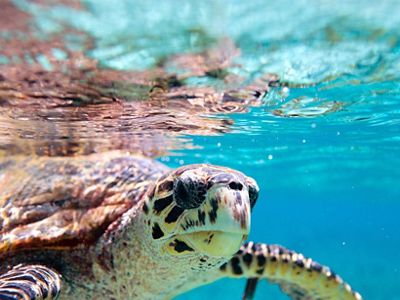
Hawksbill Sea Turtle
This turtle spends much of its time in lagoons and coral reefs. They eat sponges which creates space for corals to grow. They keep jellyfish populations in check and feed on many other invertebrates. Over 100 species can live on a sea turtle's shell. Learn more about the Hawksbill Sea Turtle.
How You Can Help The Hawksbill Sea Turtle
- Learn how to identify and avoid buying products made from hawksbill shells, also known as “tortoiseshell.” Although illegal, products made from hawksbill shells are still sold in many Central American and Southeast Asian countries.
- Watch out for our turtle friends! Hawksbill and other sea turtles can be injured by collisions with watercraft, like boats and jet skis.
- If you see sea turtles: never feed or attempt to feed them – it is harmful and illegal – and do not disturb nesting turtles, nests, or hatchlings.
- Keep nesting beaches dark and safe for sea turtles. Turn off, shield, or redirect lights visible from the beach. Lights disorient hatchling sea turtles and discourage nesting females from coming onto the beach to lay their eggs.
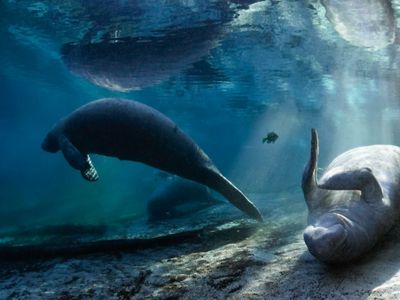
Manatee
The manatee was once mistaken for a mermaid by European sailors. Manatees are primarily herbivores. They feed for up to eight hours a day, consuming about 4% to 9% of their body weight daily (up to 108 lbs)! Learn more about manatees in Florida, and how we're protecting them.
How You Can Help The Manatee
- Keep an eco-friendly lawn or yard. Minimize the use of fertilizers and chemicals on your lawns, which become toxic runoff that enters the oceans. Excess fertilizer can cause an overgrowth of algae, which depletes oxygen from the water and blocks sunlight that seagrasses and other manatee-friendly vegetation need.
- Turn off the tap. With increasing use of fresh water, natural springs and aquifers – havens for manatees and other rare species – are dwindling. Saving water can help save manatees, giving them safe places to rest and more space to roam.
- Watch out for our manatee friends! Manatees can be seriously injured by collisions with watercraft, like boats and jet skis. Keep these gentle giants in mind as you’re enjoying the warm waters we share.
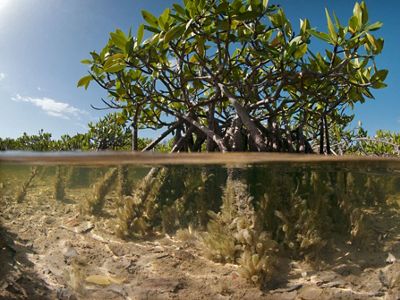
Mangroves
Master survival artists, climate heroes and nature’s nursery, mangroves provide habitat and shelter for over 3000 fish species, can store 3 to 5 times more carbon per area than tropical upland forests, and provide livelihoods for over 120M people. Read about the benefits of mangroves—and how they can be saved.
How You Can Help Mangroves
- You can donate directly to our Plant a Billion Trees program to help us reforest critical habitat, like the mangroves along the coast of Kenya!
- Find sustainable seafood alternatives to shrimp farmed from mangrove habitat. Look for the blue Marine Stewardship Council (MSC) logo on packaging to identify sustainable, wild-caught seafood. Significant mangrove habitat has been lost when coastal lands have been converted into shrimp farms. Your responsible food choices can make a difference in protecting our global mangrove habitat.
- Travel responsibly. When visiting mangroves, stay in designated passageways, refrain from collecting shells or plants, respect wildlife, and dispose of your waste properly.
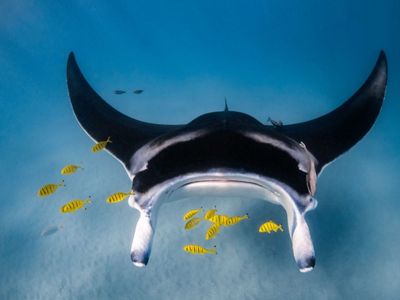
Manta Ray
Highly intelligent, highly threatened manta rays can have a wingspan of up to 30 feet. Manta means blanket or cloak in Spanish and when feeding, these rays swim with their mouths open wide to draw in plankton and krill.
How You Can Help The Manta Ray
- Hands off to protect their health! If you snorkel or dive, do not touch manta rays as touching them can disrupt valuable protective layers that prevent infection.
- Watch out for our manta friends! Mantas and other rays can be injured by collisions with watercraft, like boats and jet skis. Keep them in mind as you’re enjoying the waters we share.
- Properly dispose of used fishing line at a designated recycling bin or trash can. Your local marina, fishing access point or fishing supply store may have designated fishing line recycling bins.

Parrotfish
The colorful parrotfish lives in coral reefs. Parrotfish eat algae and coral. They have teeth inside their throat that crushes the coral bits which become the white sands that form beautiful beaches. Learn more about the parrotfish.
How You Can Help The Parrotfish
- Ask about the type of fish before you order and don’t buy parrotfish in markets or restaurants. Tell your restaurant why sustainable seafood, and parrotfish in particular, are important to you and reefs all over the world.
- Protect coral reefs, essential parrotfish habitat and feeding area. Choose a reef-safe sunscreen every time you go for an ocean swim and when visiting reefs don’t touch the corals or other wildlife.
- Write to your fisheries management boards & attend public hearings. Share your opinion and let them know you have an interest in conserving parrotfish.
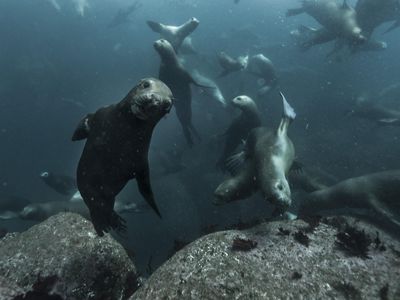
Sea Lion
Sea lions live in many parts of the world and particularly enjoy sandy shores or rocks by the ocean. Sea lions are social, playful and among the most vocal of all mammals. Often seen in big groups, they can swim in bursts of up to 25 miles per hour.
How You Can Help The Sea Lion
- Volunteer to help organizations that protect critical coastal habitats like oyster reefs and kelp forests that provide food and habitat for sea lions.
- Share the shore and follow NOAA’s Watch Marine Mammals Responsibly Guidelines to protect sea lions and other marine animals. Keep yourself and your pets a football field away from sea lions and do not attempt to feed them.
- Report animals that are injured, entangled, or distressed to local authorities so trained responders can take action and help keep you and wildlife as safe as possible.
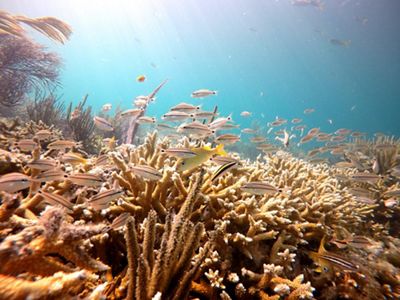
Staghorn Coral
Staghorn coral is named after its resemblance to antlers. They are the fastest growing corals, growing up to 4-8 inches per year. Speedy as staghorn corals are, their skeletons can be easily damaged by storms and human activity. Learn how TNC is using world-class science to save imperiled reefs before it's too late.
How You Can Help The Staghorn Coral
- Choose a reef-safe sunscreen when swimming in the ocean to protect coral reefs from harmful chemicals.
- When visiting reefs don’t touch the corals or other wildlife. Dive responsibly to avoid contact and accidental coral breakage.
- Practice safe boating to avoid anchor damage that can lead to coral breakage.
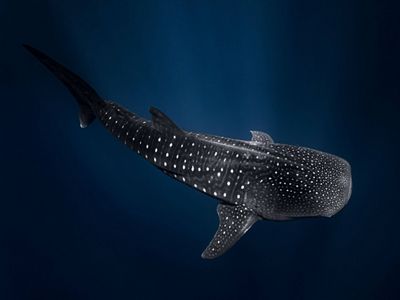
Whale Shark
The whale shark is the largest fish alive today, growing an average 18-32 feet. Often called “gentle giants,” they feed on plankton and travel far distances to find food. Their white spotted coloration makes them easy to distinguish. Learn about TNC's work in the Mesoamerican Reef, home to the largest number of whale sharks in the world.
How You Can Help The Whale Shark
- Do not buy shark products, including shark fin soup; avoid shark meat or any products that contain shark cartilage or liver oil. This will reduce the market demand, causing companies to stop killing sharks to make these products.
- If you snorkel or dive with whale sharks, do not swim too close and do not use flash photography to keep the encounters safe for both tourist and whale sharks
- Participate in whale shark research. You can volunteer on a whale shark research projects to collect photographs of sharks for ID purposes or record data on shark movements and behaviors.
The World's Goal: Protect 30x30
The Nature Conservancy supports the global goal of protecting 30% of the planet’s ocean, lands and freshwater over the next decade. To contribute to that goal, by 2030 TNC intends to conserve 4 billion hectares (more than 10% of the world’s ocean area) while benefitting 100 million people at severe risk of climate-related emergencies.
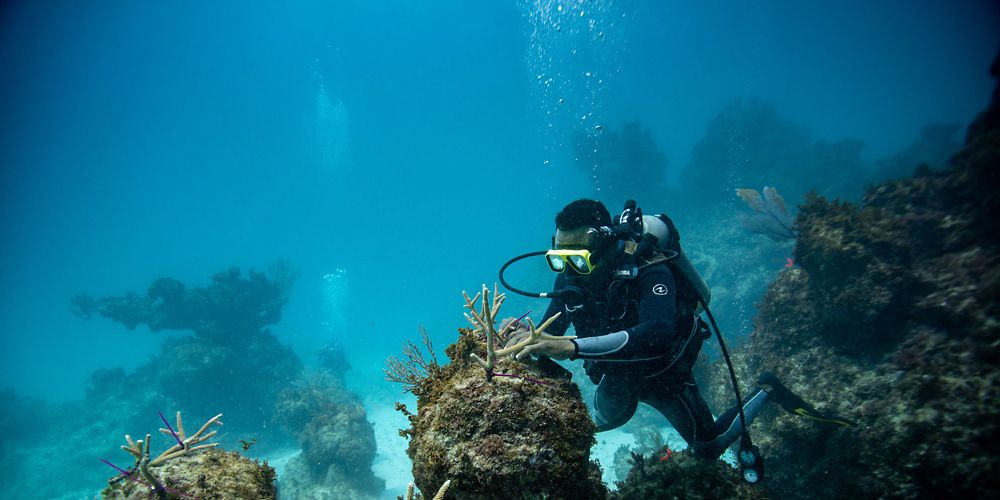
Good News About Nature
Get monthly updates from the conservation world + ways for you to get involved!
